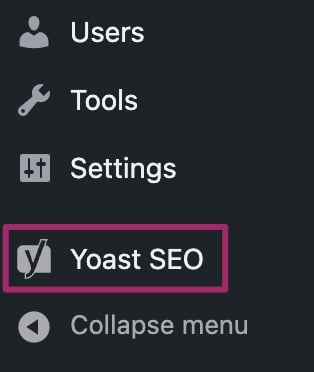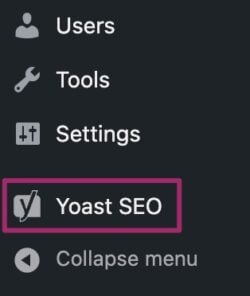
Customizing Your Sitemap Index with Yoast SEO
When it comes to enhancing your website’s visibility on search engines, the Yoast SEO plugin is an invaluable tool. One of its key features is the ability to generate an XML sitemap, which helps search engines efficiently discover and crawl your website’s pages. This sitemap index contains links to various sub-sitemaps, including those for posts, pages, authors, categories, tags, and other taxonomies. Fortunately, Yoast SEO allows you to customize this sitemap index to better suit your needs.
Customizing Your Sitemap Index
You can easily tailor the sitemap index through the “Content Types,” “Categories & Tags,” and “Advanced” settings within the Yoast SEO plugin. To access these settings, navigate to Yoast SEO > Settings in your WordPress dashboard.
Adjusting Content Types
Under the “Content Types” tab, you can manage the visibility of different post types. If you decide to exclude a specific post type from search results, it will automatically be removed from the sitemap as well. Conversely, enabling a post type to appear in search results will ensure it is included in the sitemap. You can make adjustments based on your preferences.
Step-by-Step Guide to Customize Your Sitemap
- Log into your WordPress website and navigate to your dashboard.
- Click on Yoast SEO in the left-hand menu.
- Expand the Yoast SEO settings and click on Settings.
- Locate the appropriate menu item and toggle the option for Show [type] in search results? to manage sitemap inclusion.
- Click Save Changes to apply your settings.
Managing Individual URLs
If you need to remove specific URLs from your sitemap, you can do so by marking them with a noindex tag. This ensures that search engines do not crawl or index those pages. For a detailed guide on how to implement this, refer to the instructions on noindexing URLs.
Handling Media and Taxonomies
When you upload images to your site, WordPress creates an “attachment” post type for each image, which is categorized under media. You can manage how media is handled in your sitemap directly through the settings.
For taxonomies such as categories and tags, you can customize their visibility under the “Taxonomies” tab. Similar to content types, some taxonomies may not be publicly accessible for exclusion, in which case you can make them public or exclude them manually using developer filters.
Exploring Additional Sitemap Options
Yoast SEO also generates specialized sitemaps for various types of content:
- Video Sitemap: Managed under the Video SEO section.
- News Sitemap: Configured in the News SEO settings.
- Local Sitemap: Based on location data entered in the Local SEO plugin.
You also have the option to add external sitemaps to your index, which can be beneficial if you are using non-Yoast plugins. For those looking to customize their sitemaps further, Yoast offers developer filters that allow for more granular control over what appears in your sitemap.
Examples of Customization
Here are a couple of examples of filters you can use in your functions.php file to exclude content types or taxonomies from your sitemap:
/* Exclude One Content Type From Yoast SEO Sitemap */
function sitemap_exclude_post_type( $value, $post_type ) {
if ( $post_type == 'post_type_slug' ) return true;
}
add_filter( 'wpseo_sitemap_exclude_post_type', 'sitemap_exclude_post_type', 10, 2 );
/* Exclude Multiple Content Types From Yoast SEO Sitemap */
function sitemap_exclude_post_types( $value, $post_type ) {
$post_type_to_exclude = array('post_type_slug1','post_type_slug2', 'post_type_slug3');
if( in_array( $post_type, $post_type_to_exclude ) ) return true;
}
add_filter( 'wpseo_sitemap_exclude_post_type', 'sitemap_exclude_post_types', 10, 2 );
By taking the time to customize your sitemap index, you can significantly improve how search engines interact with your website, ultimately leading to better visibility and performance in search results.

